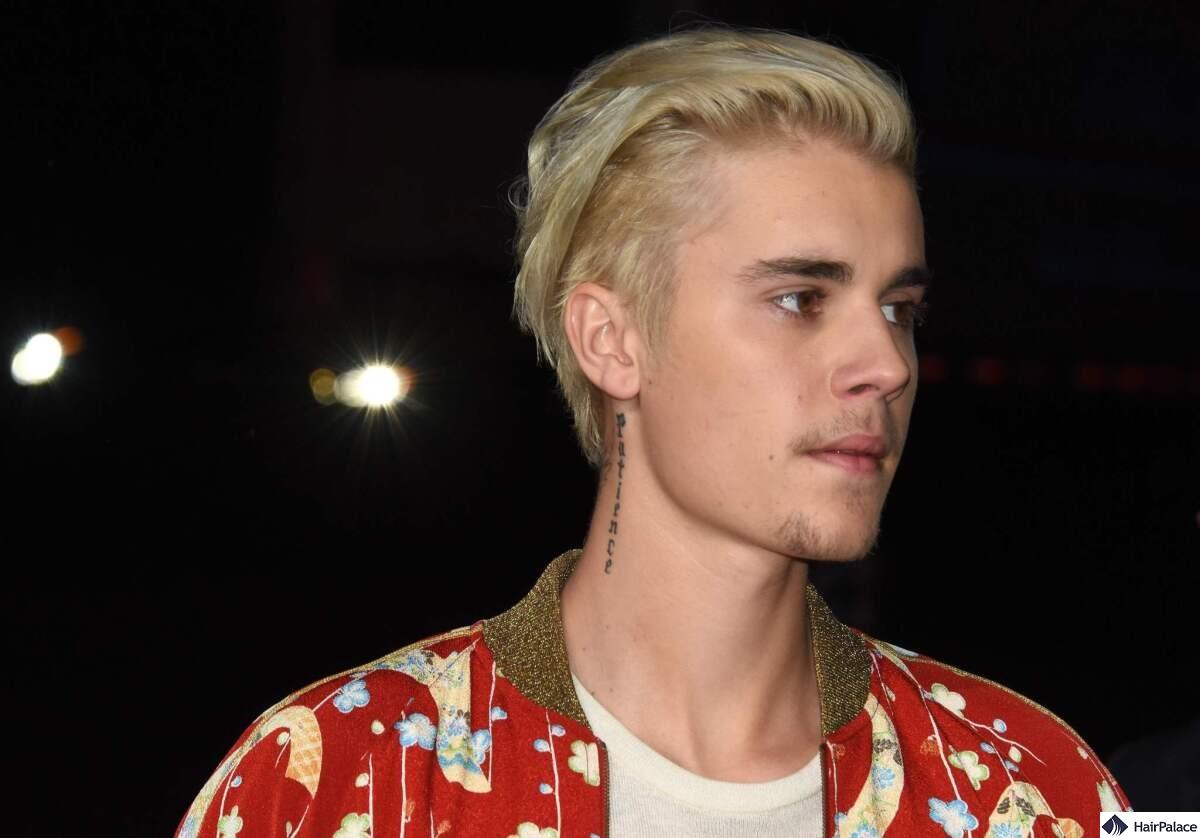Justin Bieber Hair Transplant Procedure: What is The Truth?

Justin Bieber is no stranger to the spotlight, having grown up in front of millions of fans who have followed his every move, from his meteoric rise to pop stardom to his personal life.
In recent years, speculation about the singer’s hairline has fueled rumours that he may have undergone a hair transplant procedure.
While celebrities are often secretive about cosmetic enhancements, hair transplants have become increasingly common among stars looking to maintain their appearance.
But did Bieber take this step to address hair loss, or is the speculation just another product of the rumour mill?
This article explores the facts and investigates the truth behind the rumours of Justin Bieber’s alleged hair transplant.
- Who is Justin Bieber?
- Justin’s hair loss journey
- Did he have a hair transplant?
- Is he using other hair loss remedies?

Who is Justin Bieber?

Justin Bieber is a Canadian singer, songwriter, and pop star who gained worldwide fame at a young age.
He was discovered on YouTube in 2007 by talent manager Scooter Braun and soon signed with RBMG Records.
His debut single, “One Time,” released in 2009, became a hit, and his first album, “My World,” turned him into a teenage sensation.
Bieber’s fame continued to grow, he became known for his catchy pop music, smooth vocals, and danceable beats.
Over time, his music evolved, incorporating elements of R&B, electronic, and hip-hop.
He has won numerous awards and remains one of the best-selling music artists globally.
Beyond his music, Bieber has been a public figure for his high-profile relationships, including his marriage to model Hailey Baldwin.
Despite facing challenges, including public controversies and mental health struggles, he has maintained a strong fan base.
Justin Bieber’s hair loss journey
Early career
If we look at Justin Bieber’s hairline around the time he entered adulthood it’s clear that the singer has an asymmetrical hairline. However, there are no signs of hair loss or a receding hairline.
Justin has a perfectly healthy amount of hair for someone his age, and one could even envy the star for his thick mane.

The middle of the 2010s
Around 2015 the singer started experimenting with various chemical hair treatments such as bleaching.
This likely weakened his hair and may have sped up his balding process.

First signs of hair loss and receding hairline
In 2018 when the singer turned 24, the first signs of a receding hairline started to appear.
Some of the photos taken by the paparazzi show a clear recession at his temples, albeit a minor one.

Justin Bieber’s hair loss issues in 2021-22
In 2021 Justin Bieber’s hairline showed signs of a major recession which was extremely apparent during the MTV Video Music Awards.

His experimentation with various hairstyles may have also caused him to have traction alopecia.

When he opted for a buzz cut towards the end of 2022, his widow’s peak was there for the whole world to see.

Was there a Justin Bieber hair transplant?
In 2023 Justin decided to take a step back from publicity and focus on his personal life, which led a lot of fans to speculate whether he had a hair transplant.
The singer’s absence from both the Met Gala and the Grammys added to suspicions.
Additionally, he began wearing hats and other accessories to mask the state of his hair, which further fueled speculation.
When looking at his photos from 2023 and onward we can observe a perfectly straight hairline. This certainly indicates hair restoration surgery.

Is Justin Bieber using hair loss medication?
Whether Justin Bieber used medication to restore his original hairline and stop his definite recession is unknown.
If Justin Bieber were to use hair loss treatments, there are several common medications and remedies he might consider.
These treatments slow down hair loss, stimulate regrowth, and help regain lost hair.
- Low-Level Laser Therapy (LLLT): The light is thought to increase blood flow and energy production in cells, promoting hair regrowth.
- Minoxidil: Increases blood flow to hair follicles, promoting growth and slowing hair loss. It’s most effective for early-stage hair loss, and continued use is necessary to maintain results.
- Finasteride: Blocks the production of DHT (dihydrotestosterone), a hormone linked to male pattern baldness. It’s effective for many men, but possible side effects include sexual dysfunction, which has made it somewhat controversial.
- Dutasteride: Similar to Finasteride, but inhibits more types of enzymes that convert testosterone into DHT. Carries similar risks as Finasteride.
- Ketoconazole Shampoos: Reduces scalp inflammation and may lower DHT locally in the scalp. Often used in combination with Minoxidil or Finasteride for better results.
- Hair Serums: Several brands produce serums or foams combining Minoxidil, natural DHT blockers, and peptides to nourish hair follicles and promote growth.
- Vitamins: Supports overall hair health by strengthening hair, though it doesn’t prevent hair loss caused by DHT. Best used as a complementary treatment rather than a primary hair loss solution.
- PRP Therapy: Platelets release growth factors that may stimulate hair growth and improve the health of existing follicles.

Other celebrity hair transplant stories
Last medically reviewed on June 24th, 2025


